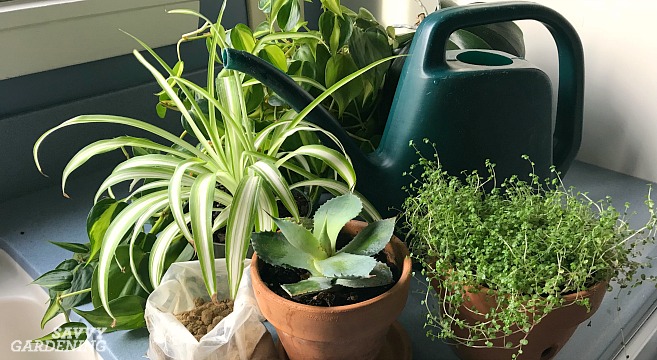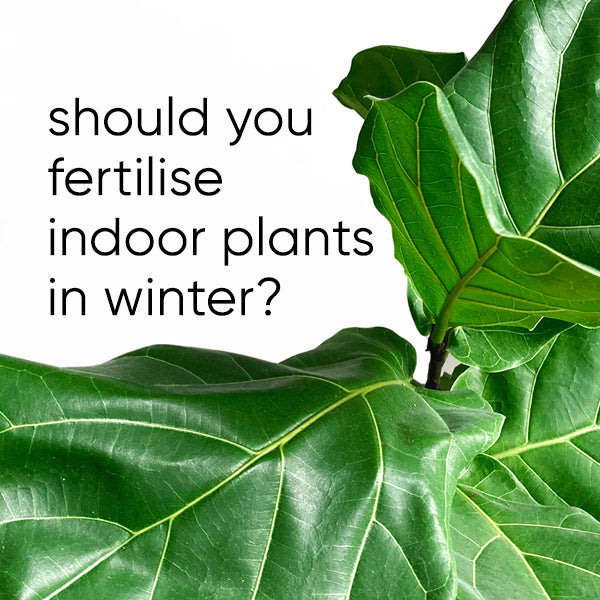Fertilize indoor plants once every 6-8 weeks during winter. Reduce frequency as plants grow slower in colder months.
Indoor plants enter a period of dormancy during the winter months. They grow slower and require less nutrition. Over-fertilizing can harm them by causing nutrient buildup in the soil. Using a balanced, water-soluble fertilizer at reduced intervals helps maintain their health.
Always check the specific needs of each plant species. Some plants may not need fertilization at all during winter. Proper lighting and watering are also crucial during this period. Adjusting your care routine can keep indoor plants thriving through the colder season. Remember, less is more when it comes to winter fertilization.
The Importance Of Winter Fertilization For Indoor Plants
Winter can be a tough season for indoor plants. The cold weather outside means less sunlight inside. Indoor plants often suffer from nutrient deficiencies during this time. Fertilizing your indoor plants in winter is essential for their health. It helps them thrive even in low light and cooler conditions.
Plant Metabolism During Colder Months
During winter, indoor plants experience a slowdown in their metabolism. This means they grow slower and use less energy. Despite this, they still need nutrients to stay healthy. A balanced fertilizer can support their metabolic processes.
Nutrient Needs In Low Light Conditions
Low light levels in winter can stress indoor plants. They need more nutrients to cope with this stress. Fertilizers provide essential elements like nitrogen, phosphorus, and potassium. These elements help plants maintain their health in low light.
| Nutrient | Role in Plant Health |
|---|---|
| Nitrogen | Promotes leaf growth and green color |
| Phosphorus | Supports root and flower development |
| Potassium | Enhances overall plant health |
Using a fertilizer with these nutrients ensures your indoor plants stay healthy. Apply it sparingly to avoid over-fertilization. Over-fertilizing can harm your plants more than help them.
- Use a balanced fertilizer with equal parts of N-P-K.
- Apply fertilizer every 4-6 weeks during winter.
- Monitor your plants for signs of nutrient deficiencies.
Winter fertilization keeps your indoor plants thriving. It helps them cope with the stresses of low light and cool temperatures.

Credit: savvygardening.com
Signs Your Indoor Plants Need Fertilizer
Indoor plants need extra care in winter. Fertilizer helps them grow strong. Watch for signs that your plants need more nutrients. Here are key signs to look for.
Stunted Growth Observations
Stunted growth means slow or no new growth. Your plant may seem smaller. Leaves may not grow as big. Check if your plant is less bushy. This shows the need for fertilizer. Plants need nutrients to grow well. Winter can make it hard for them to get enough.
Leaf Discoloration And Drop
Leaves can turn yellow or brown. Healthy leaves are green. Discolored leaves show nutrient deficiency. Old leaves may drop off the plant. This is another sign of needing fertilizer. Your plant needs more food to stay healthy.
| Sign | Description |
|---|---|
| Stunted Growth | Slow or no new growth, smaller leaves, less bushy. |
| Leaf Discoloration | Leaves turning yellow or brown, nutrient deficiency. |
| Leaf Drop | Old leaves falling off, plant needs more nutrients. |
- Stunted Growth: Smaller leaves, slow growth.
- Leaf Discoloration: Yellow or brown leaves.
- Leaf Drop: Old leaves falling off.
- Observe your plant’s growth.
- Check leaf color and health.
- Notice if leaves are falling off.
Choosing The Right Fertilizer For Indoor Plants
Choosing the right fertilizer for indoor plants can be daunting. In winter, plants need different care. This section will help you find the best fertilizer.
Organic Versus Synthetic Options
Indoor plant fertilizers come in two main types: organic and synthetic. Understanding the differences helps you make the best choice.
- Organic Fertilizers: Made from natural materials. Examples include compost, bone meal, and fish emulsion. They release nutrients slowly and improve soil health.
- Synthetic Fertilizers: Created from chemicals. They offer quick nutrient release. Often used for specific plant needs.
Both types have pros and cons. Organic fertilizers are eco-friendly and improve soil structure. Synthetic fertilizers provide immediate nutrients but can build up salts in the soil.
N-p-k Ratios And What They Mean
Fertilizers have three main nutrients: nitrogen (N), phosphorus (P), and potassium (K). These are listed as N-P-K ratios on the packaging.
| Nutrient | Role |
|---|---|
| Nitrogen (N) | Promotes leafy growth |
| Phosphorus (P) | Encourages root development and flowering |
| Potassium (K) | Boosts overall plant health |
Understanding these ratios helps you choose the right fertilizer. A balanced fertilizer (10-10-10) is good for general use. Specific needs may require different ratios.
Fertilization Frequency In Winter
Winter can be a challenging time for indoor plants. The days are shorter, and sunlight is less intense. This affects the growth rate of your plants. Knowing the fertilization frequency in winter can help keep them healthy and thriving.
General Guidelines For Indoor Plants
Indoor plants need less fertilizer in winter. They grow slower during this time. Too much fertilizer can harm them. Follow these general guidelines:
- Fertilize once a month or less
- Use a diluted liquid fertilizer
- Check soil moisture before fertilizing
Plants need nutrients to grow. In winter, they need fewer nutrients. Over-fertilizing can lead to salt buildup in the soil. This can damage the roots.
Exceptions To The Rule
Some plants are active in winter. They may need more frequent fertilization. Here are some exceptions to the rule:
- Blooming plants: Plants that bloom in winter need more nutrients.
- Tropical plants: They may continue to grow actively indoors.
- Succulents and cacti: These plants need very little fertilizer.
Adjust the fertilization frequency based on your plant’s needs. Observe their growth and health.
Applying Fertilizer Correctly
Fertilizing indoor plants in winter requires careful attention. Applying fertilizer correctly ensures your plants thrive. This section covers essential techniques and best practices.
Dilution Techniques For Plant Safety
Winter is a dormant period for most indoor plants. Over-fertilizing can harm them. Use half-strength fertilizer to avoid damage.
| Fertilizer Type | Recommended Dilution |
|---|---|
| Liquid Fertilizer | 1/2 strength |
| Granular Fertilizer | 1/4 strength |
- Mix liquid fertilizers with double the water.
- Use fewer granules for granular fertilizers.
Always read the fertilizer label for specific instructions.
Best Practices For Even Distribution
Distribute fertilizer evenly across the soil. Uneven application can cause root burn.
- Water plants before applying fertilizer.
- Pour the diluted solution evenly around the base.
- Avoid direct contact with stems or leaves.
Using a watering can with a narrow spout helps. It ensures precise application. This method prevents over-fertilization in one spot.
The Role Of Soil Quality In Fertilization
Understanding the role of soil quality in fertilization is crucial for plant health. Soil quality affects nutrient absorption, root health, and overall plant vitality. Winter can challenge indoor plants, but maintaining optimal soil conditions ensures they thrive.
Maintaining Soil Health
Maintaining soil health is essential for fertilizing indoor plants in winter. Healthy soil retains nutrients better, reducing the need for frequent fertilization. Here are key tips for keeping soil healthy:
- Ensure good drainage to prevent waterlogging.
- Avoid over-watering to maintain proper soil moisture levels.
- Add organic matter like compost to enrich the soil.
Healthy soil supports strong root systems, which are vital during winter. Roots absorb nutrients more efficiently, making fertilization more effective.
When To Repot Versus Fertilize
Deciding whether to repot or fertilize can be tricky. Here’s a simple guide:
| Condition | Action |
|---|---|
| Roots are growing out of the pot | Repot |
| Soil is compacted or has poor drainage | Repot |
| Leaves are yellowing and growth is stunted | Fertilize |
| Plants are not flowering | Fertilize |
Repotting provides fresh soil and more space for roots. Fertilizing supplies essential nutrients for growth. Assess your plant’s condition to decide the best course of action.
Common Mistakes To Avoid
Fertilizing indoor plants in winter can be tricky. Avoiding common mistakes ensures your plants stay healthy. Below, we’ll discuss the most frequent errors and how to prevent them.
Overfertilization Hazards
One common mistake is overfertilizing. Too much fertilizer can harm your plants. Indoor plants need less fertilizer in winter. Overfertilization can lead to root burn and plant stress.
- Root Burn: Excess salts from fertilizers damage roots.
- Plant Stress: Plants struggle to absorb too many nutrients.
To avoid overfertilization, dilute the fertilizer. Use half the recommended dose. Always follow the instructions on the package.
Misreading Plant Signals
Another mistake is misreading plant signals. Plants show signs when they need nutrients. Yellow leaves or slow growth can indicate nutrient deficiency. But these signs can also mean other issues.
| Sign | Possible Cause |
|---|---|
| Yellow Leaves | Could be nutrient deficiency or overwatering |
| Slow Growth | Could be lack of light or cold temperatures |
Check other factors like light and water. Don’t rush to add fertilizer. Ensure you understand the real issue before feeding your plants.

Credit: www.lovethatleaf.co.nz
Monitoring Plant Progress Post-fertilization
Monitoring your plant’s progress post-fertilization is crucial, especially during winter. Indoor plants need special attention after receiving nutrients. Regularly checking helps ensure they remain healthy and vibrant. Below are key aspects to focus on:
Tracking Growth And Changes
Track your plant’s growth by measuring its height weekly. Note any new leaves or buds. Use a simple table to record these changes:
| Week | Height (inches) | New Leaves/Buds |
|---|---|---|
| 1 | 10 | 2 |
| 2 | 11 | 1 |
| 3 | 12 | 0 |
Observe the color of the leaves. Healthy leaves are bright green. Yellow or brown leaves may indicate over-fertilization.
Adjusting Care Based On Feedback
Adjust your plant care routine based on the feedback you collect. If the plant shows healthy growth, maintain your current schedule. If the plant appears stressed, consider the following adjustments:
- Reduce the amount of fertilizer.
- Increase the frequency of watering.
- Ensure the plant gets enough light.
Sometimes plants need time to adjust. Give them a few weeks before making drastic changes. Keeping a detailed log helps identify patterns and improves care over time.

Credit: savvygardening.com
Frequently Asked Questions
Should I Fertilize My Indoor Plants In The Winter?
Fertilize indoor plants sparingly in winter. They grow slower and need fewer nutrients. Use a diluted, balanced fertilizer monthly.
How Often Should Indoor Plants Be Fertilized?
Indoor plants should be fertilized every 4-6 weeks during their growing season. Use a balanced, water-soluble fertilizer.
Why Shouldn’t You Fertilize In Winter?
Plants are dormant in winter, so they can’t absorb nutrients effectively. Fertilizing can harm roots and waste resources.
Which Fertilizer Is Best For Plants In Winter?
Organic fertilizers like compost and well-rotted manure are best for plants in winter. They provide essential nutrients and improve soil health.
Conclusion
Fertilizing indoor plants in winter requires balance. Over-fertilizing can harm them. Aim for once every 4-6 weeks. Adjust based on plant type and growth rate. By following these guidelines, your indoor plants will thrive throughout the colder months. Keep monitoring their needs for optimal health.
Happy growing!

My mission is to help you bring the beauty of nature indoors with expert advice, detailed plant care guides, and creative design ideas.




